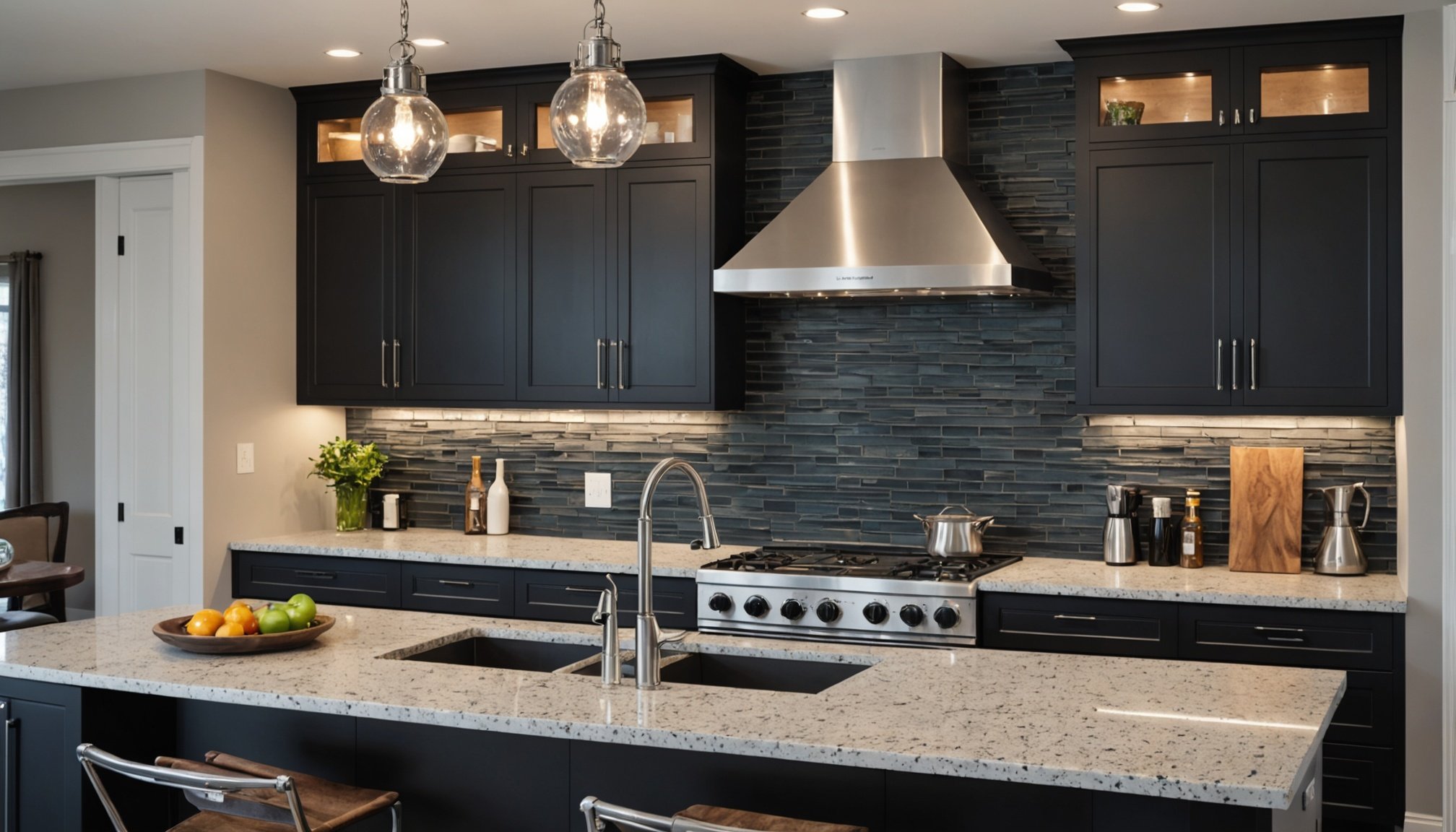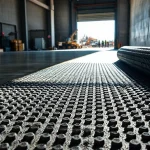Comprehensive Guide to Kitchen Backsplash Installation
Kitchen backsplash installation plays a pivotal role in enhancing the aesthetic and functionality of your cooking area. Selecting a stylish backsplash not only protects walls from splashes but also adds to the overall design statement of your kitchen. Whether you’re opting for a DIY backsplash or hiring a professional, understanding the installation process is crucial.
When planning your kitchen backsplash installation, consider factors such as style, material, and the room’s existing design elements. The choice of materials is vital as it affects both the appearance and durability of the backsplash. Options range from ceramic and glass to stone and metal, each offering unique aesthetics and maintenance needs.
Factors to Consider
Begin by defining your kitchen’s theme, ensuring the backsplash complements it without overwhelming the space. Consider the material’s resistance to heat and moisture, as these characteristics are essential for longevity. Visualise how a DIY backsplash might integrate into your kitchen’s existing architecture to maintain a cohesive look.
The installation process begins with thorough planning to avoid unnecessary complications. Ensure you have a detailed layout, factoring in outlets and corners. As you proceed, pay meticulous attention to measurements and alignment, enhancing both the backsplash’s function and visual appeal. Mindful preparation can transform a simple backsplash into a standout feature of your home.
In parallel : Transform your space with top bathroom fitters in banstead
Comprehensive Guide to Kitchen Backsplash Installation
Kitchen backsplashes serve a crucial role in interior design, offering both aesthetic appeal and functional protection. Choosing the right DIY backsplash style requires consideration of various elements, such as colour, texture, and kitchen layout.
Planning the Installation
Embarking on a kitchen backsplash installation begins with careful planning. Evaluate the existing kitchen decor to select a stylish backsplash that complements countertops and cabinets. Next, decide whether to use large or small tiles, considering room size and desired visual effect.
Understanding the installation process enhances execution. Start by drafting a layout plan, ensuring measurements accurately reflect the space. This clarity guides material selection and minimizes waste. Anticipate challenges such as oddly shaped corners or uneven surfaces.
Finally, gather adequate materials and tools before undertaking this DIY project. Essential items include a notched trowel, tile saw, spacers, and appropriate adhesive. Consider the complexity of the design when determining whether professional assistance might be beneficial.
Backsplashes can transform a kitchen’s look significantly, adding personality while preventing wall damage from splashes and spills. By navigating the installation process thoughtfully, anyone can achieve a durable and beautiful backsplash.
Essential Tools and Preparation
Proper preparation is key to a seamless backsplash installation. Armed with the right tools, a successful project is well within reach. Here’s a list of essential tools for your toolkit: tile cutter, adhesive trowel, grout float, level, tape measure, spacers, and safety goggles. These tools ensure accurate measurements and proper installation of each tile.
Before diving into the installation, the workspace demands thorough preparation. Begin with cleaning the wall surface, as dirt and oil can impede adhesive strength. Next, measure the area meticulously and plan your layout. This step ensures the tiles align with attention-grabbing elements like outlets and cabinets, avoiding any unexpected hitches.
Safety cannot be overstated when working on a DIY backsplash. Equip yourself with protective gear — gloves and goggles — to prevent injuries from sharp tile edges and adhesive products.
Preparation forms the foundation of any successful backsplash installation. It not only simplifies the installation process but also fortifies the final outcome. This attention to groundwork can save time and provide the confidence needed to tackle your kitchen project, transforming hesitation into self-assured execution. With the essentials at hand, your stylish backsplash dreams are perfectly achievable.
Grouting and Finishing Touches
Achieving a flawless kitchen backsplash installation requires careful attention during grouting. A properly grouted tile ensures both durability and an aesthetically pleasing finish. It’s crucial to use the right technique; spread grout diagonally across tiles using a grout float, pressing it into the joints.
Ensuring the removal of excess grout enhances the overall appearance, giving your kitchen walls a pristine finish. Wipe tiles with a damp sponge, frequently rinsing it. This method maintains the grout lines crisp and tiles clean.
To add longevity to your backsplash, sealing the grout is pivotal. A sealant protects grout from stains and moisture, crucial for preserving a polished look in high-traffic kitchen areas. Applying a waterproof sealant after the grout cures provides an extra protective layer.
Additionally, perfect the look by caulking where the backsplash meets countertops or cabinets. This step tackles potential water damage spots and conceals minor imperfections, offering a seamless finish.
Meticulous grouting and finishing not only fortify the structure but elevate the aesthetic, ensuring your DIY backsplash reflects both quality craftsmanship and your personal style. These steps, executed with precision, contribute significantly to a durable and stylish backsplash.
Step-by-Step Installation Process
Navigating a successful backsplash installation procedure requires precision and patience. Let’s delve into the essentials of preparing surfaces, adept tile cutting, and optimal placement techniques.
Preparing the Surface
Begin your journey by cleaning the kitchen walls thoroughly to eliminate grime or grease that could affect adhesive quality. Ensure surfaces are dry, and utilise a level to check for evenness, as an unsettled base can lead to misaligned tiles. Apply a primer suited to the material to promote better adhesive bonding.
Cutting and Fitting Tiles
Accurate tile cutting is crucial. Use a tile cutter or a wet saw for precision, tailoring each piece to fit specific backsplash dimensions. Measure twice to ensure correctness before making irreversible cuts, and test fit tiles along surfaces, checking alignment and fit prior to setting them.
Applying Adhesive and Setting Tiles
Utilise a quality adhesive, spreading it evenly with a notched trowel to ensure sufficient coverage. Press tiles firmly into the adhesive, starting from the centre outward to manage alignment. Make use of spacers to maintain uniform gaps between tiles. This orderly approach will keep your backsplash stylish and symmetrical, enhancing its visual appeal and structural integrity.
Choosing the Right Materials
Selecting the perfect backsplash materials is crucial for both aesthetics and functionality. Popular options include ceramic, glass, stone, and metal, each with unique characteristics. Ceramic tiles are affordable and versatile, offering a multitude of colours and designs, but might chip in high-impact areas. Glass tiles provide a sleek, modern look and reflect light beautifully, creating a brighter kitchen. However, they can be more costly and challenging to install.
Stone options, including marble and granite, provide a luxurious feel and are highly durable. Yet, they may require regular sealing to maintain their appearance. Metal backsplashes, such as stainless steel, offer a contemporary and industrial vibe but can show fingerprints and scratches easily.
When choosing materials, assess durability and maintenance needs according to your lifestyle. For instance, busy kitchens benefit from low-maintenance and stain-resistant tiles. Colour and texture also play vital roles. Neutral tones offer versatility, while bold patterns can serve as a focal point. Ultimately, ensuring that the backsplash complements your kitchen’s overall design while meeting practical needs will result in a durable and visually appealing feature. This careful selection process empowers you to create a stylish backsplash that enhances your home’s charm.
Troubleshooting Common Issues
Kitchen backsplash installation can present unforeseen installation problems. Successfully navigating these common challenges ensures a polished end result. Understanding error correction transforms mistakes into learning experiences.
Misalignment and spacing are frequent issues. To address these, accurate measurement and planning at the layout stage are crucial. If discrepancies arise, adjusting individual tiles with spacers provides a solution, maintaining even distribution.
Cracked tiles or adhesive failure may occur despite careful preparation. Repair involves removing the affected tile using a chisel or scraper, reapplying adhesive, and setting a new tile in place. This quick remedy maintains the integrity of the entire backsplash.
Sometimes, adhesive shifts lead to misaligned tiles during setting. Correct this by slightly pressing the tile back into place before the adhesive cures.
Consider these tips: ensuring even cuts, avoiding excessive force during placement, and checking alignment regularly during the process. Proactively addressing these issues can drastically alleviate frustration and ensure a flawless finish.
By anticipating challenges and knowing solutions, any DIY backsplash enthusiast can achieve a stylish backsplash that enhances kitchen elegance. This preparedness is vital for turning potential pitfalls into an opportunity for creating a seamless and sophisticated installation.
Design Inspiration and Trends
Incorporating a stylish backsplash into your kitchen design can elevate the entire aesthetic of your home. Current trends in kitchen backsplash design focus on combining functionality with artistic flair. Explore bold, geometric patterns or subtle, nature-inspired motifs to make your backsplash the centrepiece of your kitchen.
Mosaic tiles are popular for creating intricate designs and can add a splash of colour and texture. Pair these with neutral countertops for a balanced look or use vibrant hues to create a striking visual contrast. Stone backsplashes like marble and granite remain timeless choices, offering elegance and durability. They seamlessly integrate with both contemporary and traditional kitchen styles.
For a minimalist approach, consider sleek, matte-finished tiles or metallic accents. Metallic options, such as stainless steel or brushed nickel, provide a modern, industrial edge while reflecting light to make small kitchens appear more spacious.
Mixing materials is another trend gaining traction. For instance, combining glass with natural stone adds depth and visual interest. Consider matching your backsplash with chocolate-toned cabinets or white countertop surfaces to keep the space cohesive. With endless possibilities, a well-designed backsplash not only protects your walls but also showcases your unique style.
Maintenance and Care Tips
A well-maintained kitchen backsplash not only retains its charm but ensures longevity. Regular backsplash maintenance, using correct cleaning tips, plays a pivotal role in its preservation. Cleaning products differ based on materials; for instance, a mild detergent is ideal for ceramic tiles, while a vinegar solution suits glass for retaining sheen. Stone backsplashes benefit from specific stone cleaners to prevent dullness and stains.
Routine maintenance tasks are essential to extend your backsplash’s life. Periodically checking grout lines and resealing them keeps moisture at bay, preserving their integrity. Employing a soft cloth instead of abrasive scrubbers prevents scratches, especially on delicate surfaces like glass and metal.
Address minor damage promptly to keep your backsplash looking new. For small chips or cracks in tiles, use tile repair kits that come with matching glazes or fillers to maintain a cohesive appearance. For stained grout, a mix of baking soda and water or specialized grout cleaners restores its original look.
These maintenance techniques, executed periodically, protect your backsplash’s durability and aesthetics. By integrating these practices into your cleaning routine, you unquestionably keep your kitchen backsplash as stunning as the day it was installed. This attention to care affirms a spectacular, lasting kitchen feature.











